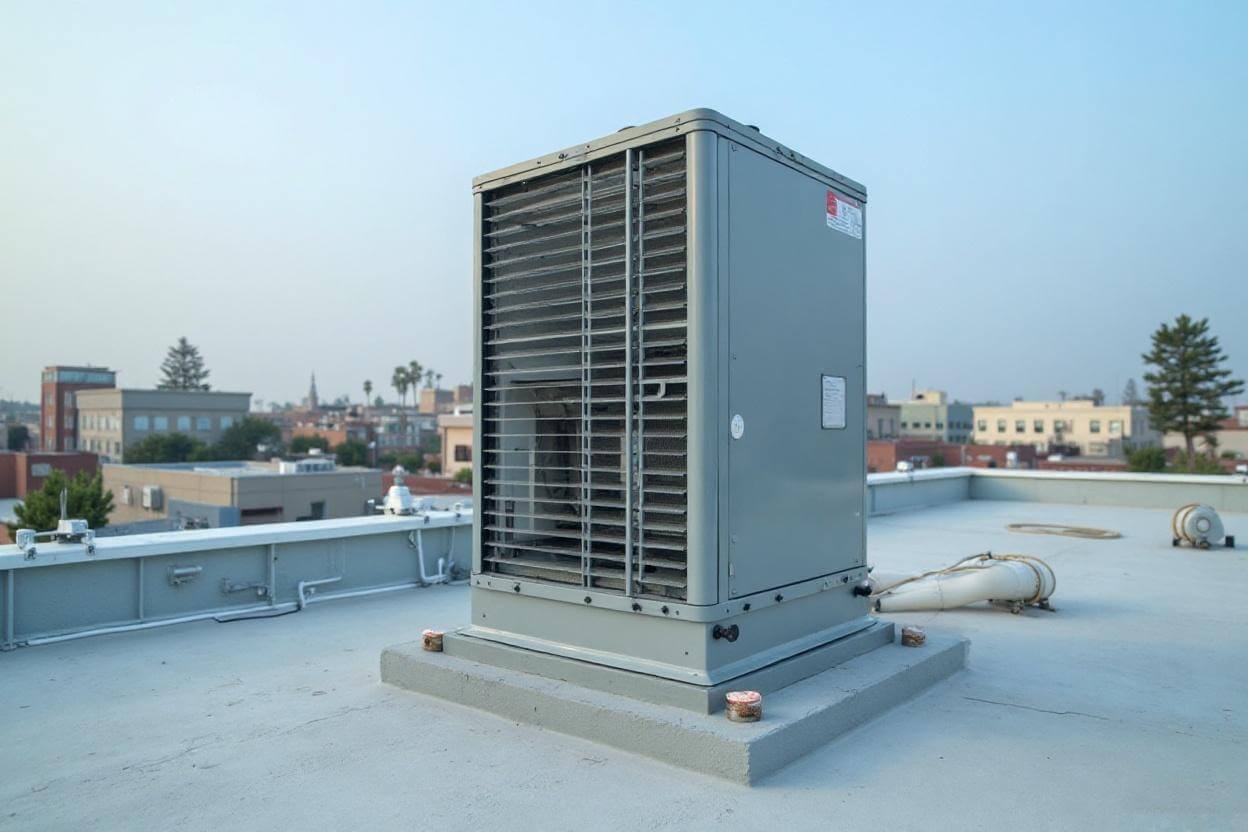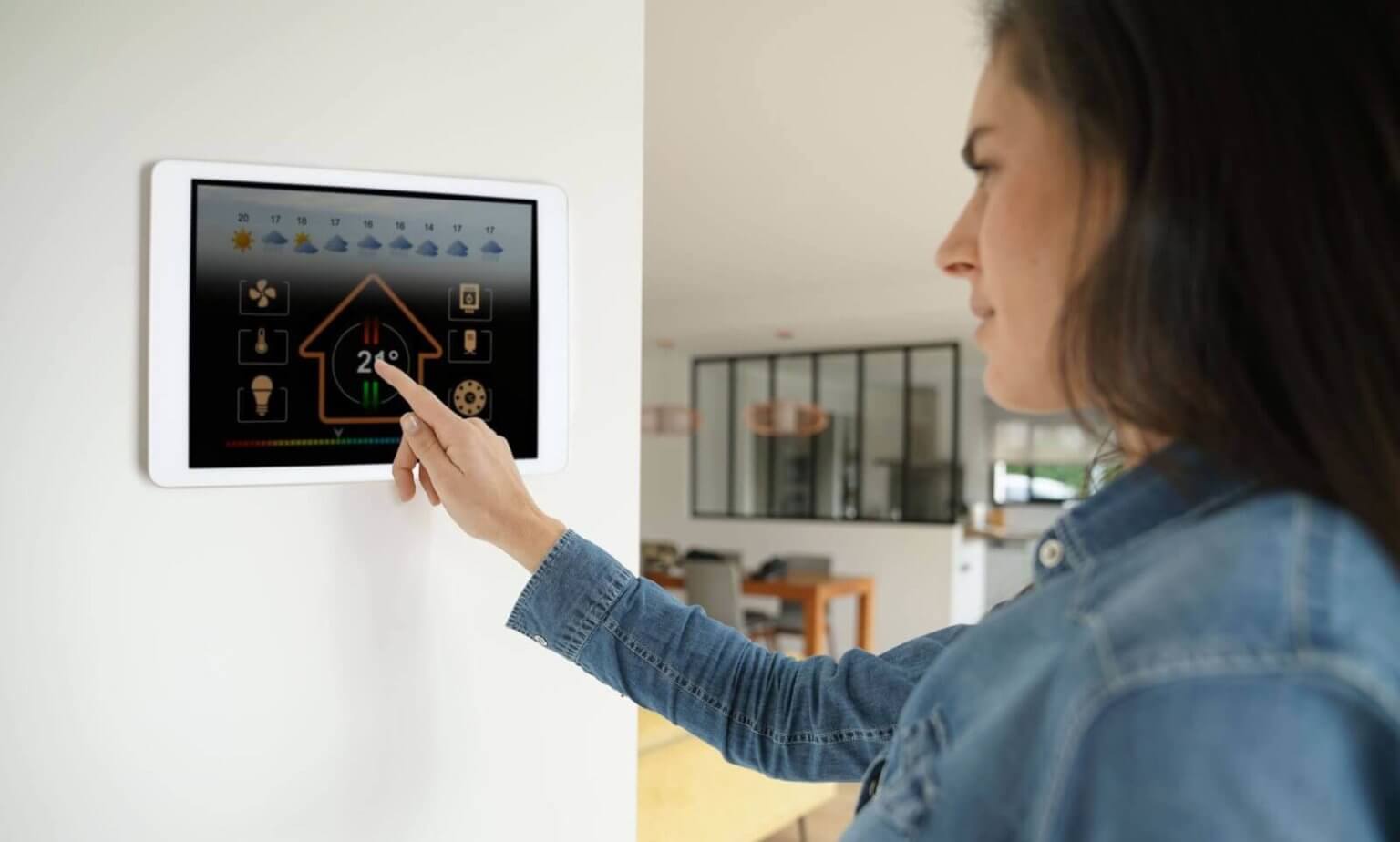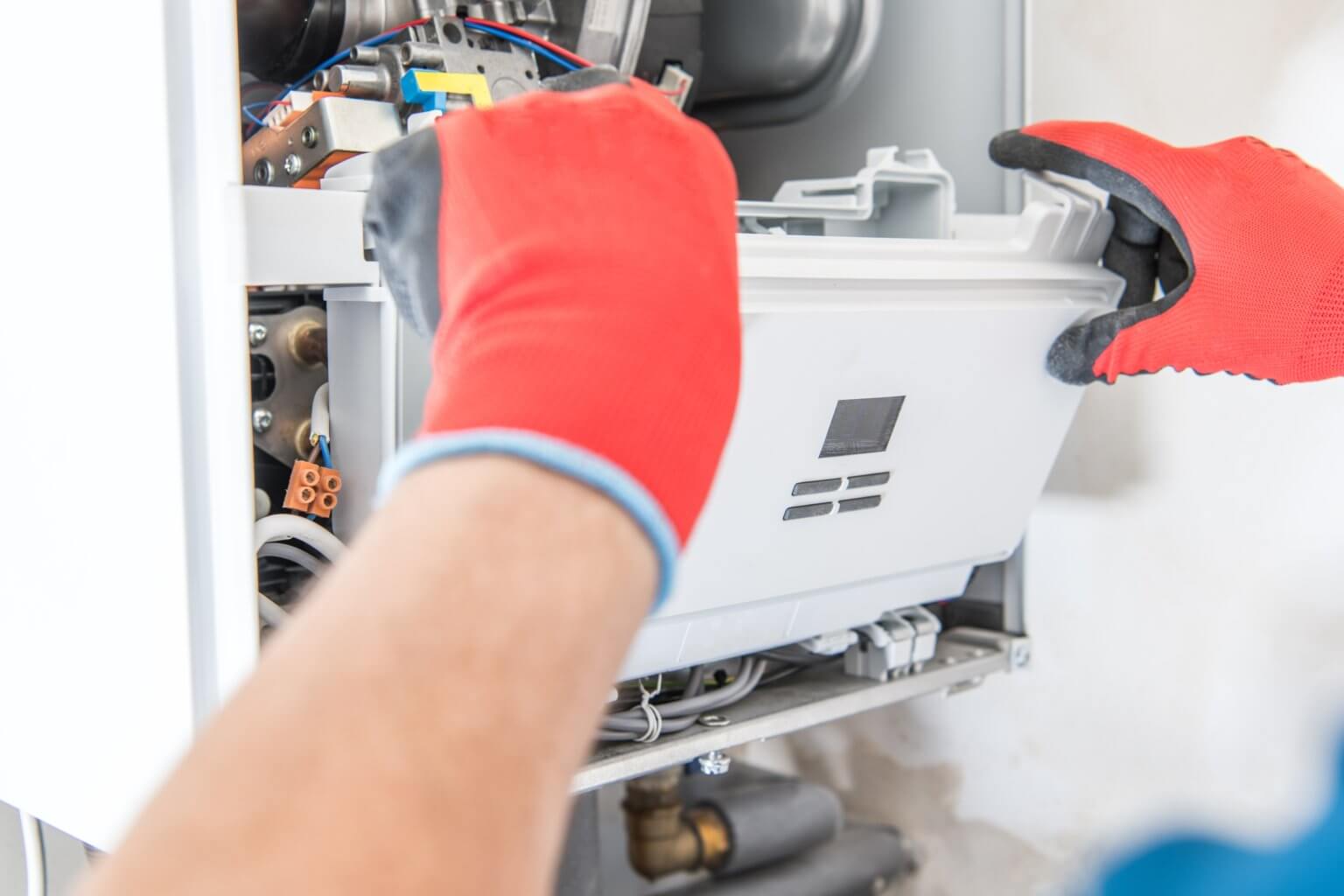How Much Does It Cost To Replace An Existing HVAC System?
Homeowners in Canoga Park, CA tend to ask the same first question when their system starts limping along in August heat: how much will a full replacement cost? The honest answer is that pricing depends on the home, the ductwork, the electrical service, the equipment brand, and the scope of work. Good news: with clear inputs, the numbers get predictable. This article lays out realistic ranges, the specific variables that change your price, and how existing HVAC retrofits differ from a straight swap. It also shares local context from jobs Season Control Heating & Air Conditioning installs across the West Valley, from small bungalows near Lanark Park to larger two-story homes off Sherman Way.
The quick price ranges most Canoga Park homeowners see
For a typical single-family home in Canoga Park, a full system replacement with standard efficiency equipment usually lands between $9,500 and $16,000. That means replacing the outdoor condenser, indoor furnace or air handler, evaporator coil, and all standard accessories. High-efficiency systems with variable-speed components commonly run $15,000 to $26,000. Larger homes with zoning, advanced filtration, and duct modifications can reach $28,000 to $40,000.
Heat pump conversions that remove gas heat and install an electric heat pump generally range from $14,000 to $32,000, depending on electrical upgrades and duct changes. Small condos with existing linesets and easy access may come in lower. Homes with tight crawlspaces, asbestos remediation, or service panel upgrades trend higher.
Those are broad ranges. To understand where your home lands, it helps to look at the drivers.

What drives the replacement price: the six big variables
The first driver is system size, measured in tons for cooling and BTUs for heating. A 1,200-square-foot Canoga Park home with average insulation and decent ductwork might need a 2- to 2.5-ton system. A 2,200-square-foot two-story home often needs 3.5 to 4 tons. Undersizing causes poor comfort and long runtimes; oversizing causes short cycling and humidity issues. Proper Manual J load calculations determine the right size. Bigger systems cost more in equipment and sometimes in electrical capacity.
The second driver is efficiency level. Standard 14.3 SEER2 to 16 SEER2 systems cost less up front. High-efficiency 17 to 20+ SEER2 systems with variable-speed compressors cost more but reduce monthly bills and improve comfort, especially during West Valley heat waves. Many homeowners choose a mid-tier system for the best blend of price, comfort, and operating cost.
The third driver is type of system. Like-for-like replacement of a gas furnace and split AC usually costs less than converting to a heat pump. Heat pumps need matching indoor coils and often require new linesets, low-leakage duct sealing, and in some cases larger electrical circuits or a new breaker. If the home lacks gas or the owner wants to reduce gas usage, a heat pump can be a smart upgrade. Incentives can offset some of the difference.
The fourth driver is ductwork condition and layout. Ducts in many Canoga Park attics are 15 to 30 years old, with kinks, air leaks, or undersized returns. If the static pressure is high, a new high-efficiency blower will not deliver full airflow. Light duct sealing and a new return can be a small add-on. Full duct replacement is a separate job that can add $4,000 to $12,000 depending on home size and access. Contractors who skip full airflow testing often quote lower but leave comfort issues unsolved.
The fifth driver is installation access and code corrections. Attic access, roof clearances, crane use for rooftop units, and permit requirements can change the labor cost. Homes with older flue vents, missing sediment traps, or noncompliant condensate lines need corrections. These are affordable line items on a proposal, but they matter for safety and inspection approval.
The sixth driver is controls and accessories. Zoning dampers, premium filtration, UV lights, condensate pumps, smart thermostats, and attic platforms add cost. Some add real value in the Valley’s dust and pollen season. Others are optional. A good tech will explain which address a specific problem rather than adding gadgets for show.
Existing HVAC retrofits vs. simple swaps
A simple swap is a like-for-like changeout with the same fuel type, similar capacity, and no meaningful home changes. It keeps the existing duct layout and lineset if they pass inspection. This is the least expensive path when the existing infrastructure is sound.
Existing HVAC retrofits go deeper. They address known comfort flaws, noise, hot rooms, and high bills. They may include resizing returns, adding supply runs, relocating the furnace for service access, converting from gas to heat pump, adding zoning for a two-story layout, or improving attic insulation to reduce load. In practice, a retrofit often reduces the tonnage requirement once leaks and insulation are corrected. The upfront bill may rise due to more labor and materials, but the monthly energy use drops, and comfort finally matches the thermostat setting. Many Canoga Park homeowners choose a retrofit after years of fighting a hot upstairs or a cold living room that faces Roscoe Boulevard winds.
What Season Control typically includes in a professional replacement
A full replacement from a licensed local contractor should include a permit with the City of Los Angeles or County where applicable, removal and recycling of old equipment, new matched equipment with AHRI certificate, new pad or platform, new lineset or verified-clean lineset with proper flushing, correct refrigerant charge by measured superheat and subcooling, sealed duct connections with mastic, a new filter rack, a new condensate safety switch, and a start-up report. It should also include static pressure measurements and a post-install test of temperature split and airflow. Homeowners who pay attention to these details tend to end up with quieter systems and lower bills.

A look at common scenarios in Canoga Park
A 1,500-square-foot single-story home near Canoga Park High School wants a reliable system and lower bills. The existing 23-year-old 3-ton split AC and 80% gas furnace struggle on 100-degree days. Ducts are older but not torn. A right-sized 2.5- or 3-ton 15.2 SEER2 system with a variable-speed furnace and a new return can land near $11,000 to $15,000. If the ducts are leaky, expect $3,000 to $5,000 for sealing and adding a larger return, moving the total into the mid-teens. The upside is steadier temps and a quieter blower.
A 2,200-square-foot two-story house off De Soto Avenue sees upstairs bedrooms run 5 to 8 degrees warmer in summer. The owner wants better sleep and is open to an existing HVAC retrofit. A zoning system with two dampers, a variable-speed air handler, and a 17+ SEER2 heat pump could cost $22,000 to $32,000. This often includes a larger return, dedicated supply to the primary bedroom, and balancing. The comfort gain is immediate.
A 1,000-square-foot condo with a closet air handler and a small rooftop condenser on a shared building can be the opposite. Access is easy, lineset is short, and capacity is around 1.5 tons. seasoncontrolhvac.com HVAC upgrades & retrofits A like-for-like changeout may fall between $8,500 and $12,000. Building rules and crane scheduling can add fees, but the job is fast and permits are straightforward.
Heat pump conversion costs and incentives
Many West Valley homeowners are interested in heat pumps to reduce gas use and simplify maintenance. A heat pump system replaces the furnace with an air handler and uses the outdoor unit for both cooling and heating. In Canoga Park’s climate, modern heat pumps handle winter nights well. Costs are higher if the electrical panel is small or full. A 100-amp panel with little spare capacity may need a service upgrade, which can add $2,500 to $6,500 depending on the home and utility coordination. Some conversions reuse the existing ductwork after sealing and static pressure corrections. Others need duct resizing to support the air handler’s airflow. The range is broad, but the comfort and quiet operation often justify the move.
Local and federal incentives can help. Federal tax credits for qualifying heat pumps under the Inflation Reduction Act can reach up to $2,000. Utility programs change, but LADWP and SoCal Edison have offered rebates for qualifying equipment and weatherization improvements. Season Control helps homeowners identify active programs and complete paperwork. Incentives do not remove the need for solid design. They do make a well-planned retrofit more reachable.
How equipment brands influence pricing
Brand plays a role, but not the leading one. The top-tier brands have price differences of roughly 10 to 25 percent for similar specs. The bigger costs hide in labor quality, ductwork corrections, and change-order risk. A mid-range brand with a smart duct fix usually beats a premium logo slapped onto bad airflow. Warranty terms are fairly competitive across the industry. What matters is proper registration, clean electrical work, and authorized service if something fails.

What a proper site visit covers
A credible quote requires eyes on the home. The tech should measure supply and return grills, assess filter size, check static pressure, document duct size, inspect the attic or closet for code issues, and perform a load calculation. They should ask about comfort complaints and bills. They should verify line voltage, breaker size, and panel space. Photos of the flue, condensate, and platform help plan the job. If a contractor quotes a full system without these steps, the price may look attractive but the result often misses the mark.
Timeline and what to expect on install day
Most full replacements take one to two days. A straight swap can finish in a day if access is clean and inspections are quick. Retrofits with duct changes take two or three days. Crews protect floors, remove old equipment, set the new platform or pad, run the lineset, set the condenser, connect electrical, plumb the condensate, and seal ducts at the unit. They start up the system, set thermostat schedules, and review maintenance steps. The inspector usually visits within a few days. Summer heat can create a backlog, so scheduling early avoids rush fees and delays.
Why quotes can be thousands apart
Price differences between bids often trace back to scope. One contractor might include a lineset, new return grill, and permit. Another might reuse the lineset, skip airflow work, and quote “cash price.” Some bids use single-stage equipment; others include variable-speed systems that smooth temperatures and cut noise. If two quotes differ by $4,000, compare their equipment model numbers, duct solutions, and included code fixes. Ask for the AHRI matched system number and the warranty summary. The low bid can be fine if the home is straightforward. For most West Valley houses, the mid bid that solves airflow is the better long-term value.
Comfort and operating cost: the hidden ROI
A quality retrofit does more than replace metal boxes. It lowers your monthly bills and raises comfort. Variable-speed blowers keep air moving at low speed, improving filtration and evening out temperatures. Two-stage or variable compressors avoid the hot-cold swings of single-stage units. When ducts leak, you pay to cool the attic. When returns are undersized, your blower strains. Fixing those issues during replacement turns a line item into real savings. Most homeowners who upgrade from a 10 SEER system to 16-18 SEER2 report 20 to 40 percent lower summer bills, depending on usage and insulation.
Local factors unique to Canoga Park homes
Attic temperatures in the West Valley run high. In July, 140-degree attics are normal. That heat demands clean airflow, correct charge, and solid attic platforms. Many older homes near Owensmouth Avenue have narrow hallways and small filter returns. Those homes benefit from larger filter cabinets to reduce resistance and protect the blower. Some 1960s properties have older electrical panels that restrict heat pump adoption without an upgrade. Others have asbestos on old duct wrap or flue pipes, which must be handled by licensed abatement before work proceeds. These realities shape both price and schedule.
Maintenance after replacement
New systems still need care. Change filters every one to three months depending on filter type and pets. Schedule annual service to check refrigerant levels, clean coils, test safety switches, and verify static pressure. In dusty seasons, rinse the outdoor coil with gentle water pressure. These steps protect warranty coverage and maintain efficiency. Season Control offers maintenance plans that include tune-ups and priority scheduling during heat waves.
Typical line items you may see on a proposal
The proposal should show equipment model numbers, efficiency ratings, and included parts. Expect to see furnace or air handler, condenser or heat pump, evaporator coil, lineset or lineset flush, pad or platform, disconnect box, whip, thermostat, condensate drain and safety switch, permit fees, crane fees if needed, and duct sealing or return work if applicable. Clear language on labor warranty length matters. Ten-year parts warranties are common when equipment is registered.
Red flags during the quoting process
Quotes that skip permits, reuse unknown linesets without testing, or avoid airflow measurements put the homeowner at risk. The City can require removal if unpermitted equipment fails inspection later. Dirty or mismatched linesets can contaminate a new compressor. High static pressure shortens blower life. A good contractor explains these risks and the fixes in plain language.
Two smart ways to control costs without hurting quality
- Choose mid-tier efficiency with variable-speed airflow. A 16-17 SEER2 system with an ECM blower often delivers 80 percent of the comfort of premium gear at a much lower price.
- Fix the biggest duct bottleneck rather than replacing the entire system’s ductwork. A larger return and sealing visible leaks commonly deliver a strong comfort gain for a modest cost.
What homeowners ask most — quick answers
- How long will my home be without cooling? Usually less than a day on a straight swap. Retrofits may run to day two, but crews plan to keep the home comfortable overnight when possible.
- Can a new system use my current ducts? Yes, if they pass inspection for size and leakage. Many homes benefit from a bigger return or minor repairs. Some older ducts need replacement for safety and performance.
- Do I need a permit? Yes. Proper permits protect resale value and ensure code compliance. Inspections are standard in Los Angeles and surrounding jurisdictions.
- Will a heat pump keep my house warm in winter? Modern heat pumps sized correctly for Canoga Park conditions work well. Very cold nights are rare, and variable-speed units handle them efficiently.
- How many quotes should I get? Two or three is reasonable. Compare scope, not just price, and ask to see the load calculation and the AHRI match.
What Season Control brings to an existing HVAC retrofit
Season Control Heating & Air Conditioning has installed and serviced systems in Canoga Park for decades. The team understands the attic conditions, panel constraints, and duct layouts common to the neighborhood. They perform load calculations, measure static pressure, and build proposals that fix airflow first. Their crews pull permits, pass inspections, and leave the system with documented start-up data. They offer financing options, help with rebates, and schedule installs around summer heat demands. Homeowners appreciate a quiet blower, even room temps, and reasonable bills. Those outcomes come from disciplined design, not luck.
How to move forward
The simplest next step is a site visit. Expect 60 to 90 minutes for measurement, photos, and a conversation about comfort goals. The written proposal will show two or three viable options: a like-for-like replacement, a mid-tier upgrade with airflow fixes, and an existing HVAC retrofit that solves persistent hot or cold spots. Each option will include clear pricing, equipment details, and any recommended duct or electrical work. From there, installation can be scheduled, usually within a few days to a couple of weeks depending on season and permit timing.
Residents near Parthenia Street, Owensmouth Avenue, or De Soto Avenue who want a bid grounded in real numbers can book a visit now. Season Control Heating & Air Conditioning serves Canoga Park and the surrounding West Valley with full-system replacements, heat pump conversions, and performance-focused retrofits. The call results in a real plan, not a guess.
Final thought on value
Price matters, but comfort and reliability matter more over the next 12 to 20 years. A fair budget for a Canoga Park home is the one that delivers steady temperatures, quiet operation, clean air, and safe code-compliant installation. In most cases, that means a properly sized mid- to high-efficiency system with targeted duct improvements. That combination keeps the total reasonable while solving the problems that sent the homeowner shopping in the first place.
Ready to see exact numbers for your address? Schedule a consultation with Season Control Heating & Air Conditioning. A clean, local retrofit plan beats a vague estimate every time.
Season Control Heating & Air Conditioning provides HVAC services in Canoga Park, CA. Our team installs, repairs, and maintains heating and cooling systems for residential and commercial clients. We handle AC installation, furnace repair, and regular system tune-ups to keep your home or business comfortable. We also offer air quality solutions and 24/7 emergency service. As a certified Lennox distributor, we provide trusted products along with free system replacement estimates, repair discounts, and priority scheduling. With more than 20 years of local experience and hundreds of five-star reviews, Season Control Heating & Air Conditioning is dedicated to reliable service across Los Angeles. Season Control Heating & Air Conditioning
7239 Canoga Ave Phone: (818) 275-8487 Website: https://seasoncontrolhvac.com/hvac-retrofits-upgrades-la-ca/
Canoga Park,
CA
91303,
USA